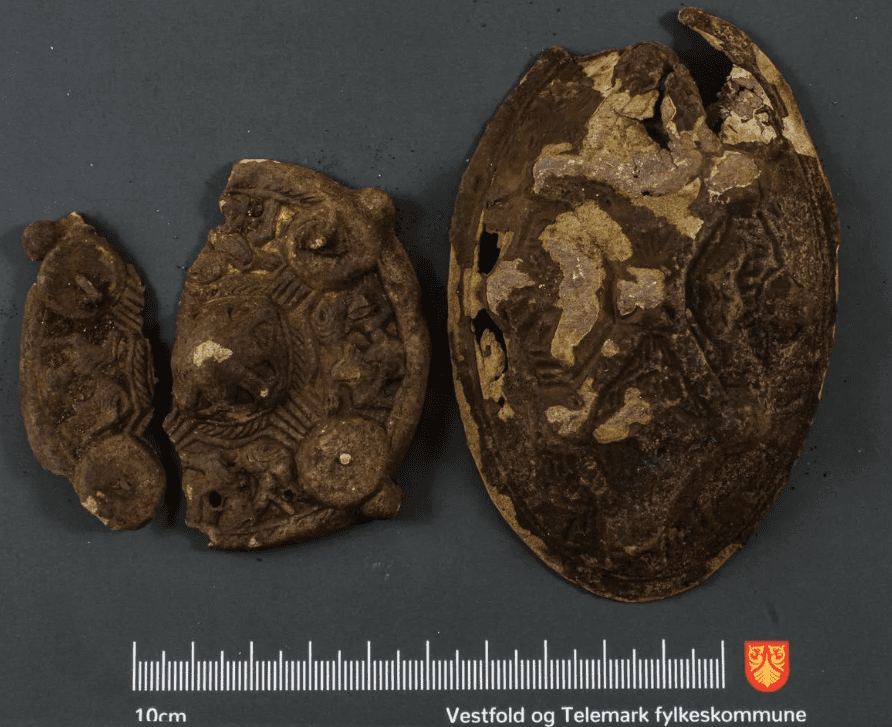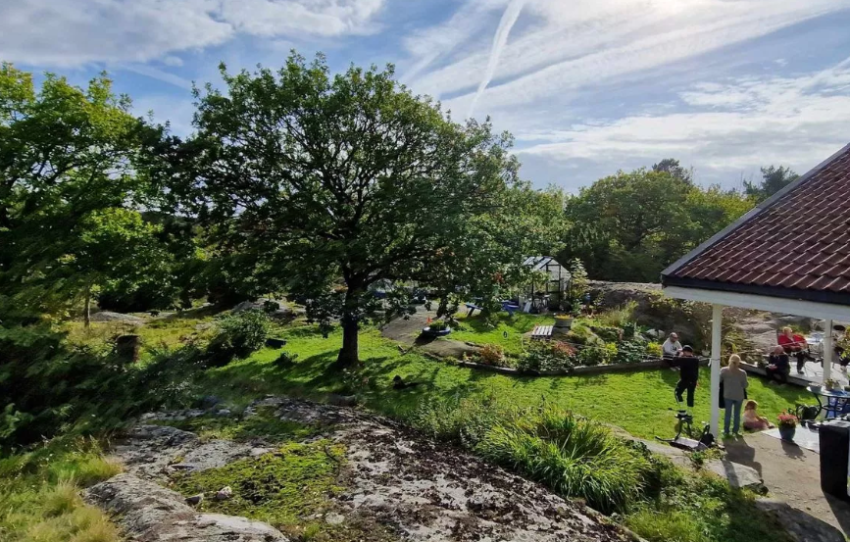A family searching for a lost earring in their backyard found the remains of a Viking treasure, including ancient bronze ornaments in Norway.
When the jewelry went missing, the family pulled out a metal detector, hoping it would signal. But the detector started making noise near a large tree behind their house – and after some digging, they uncovered artifacts from a Viking treasure trove.
Among the ancient relics are two bronze ornaments that historians say were once covered in gold. Vibeke Lia, an archaeologist at Vestfold and Telemark County Council, said one of the pieces was a kind of oval brooch, often found in women’s graves and used to fasten the shoulder straps of halter dresses.
“These are usually found in pairs, so there must have been another one there,” she said. The other object is harder to identify, but experts think it too is a brooch with a different shape.
The jewelry suggests that the grave probably belonged to an aristocratic Viking woman. “These (brooches) are in pretty good condition compared to most metal detecting finds we get, because this area has never been plowed,” she said.



According to a Facebook post by the county council’s cultural heritage department, the family stopped digging after the metal detector found the remains and contacted archaeologists to ask them to look at the discovery.
Experts believe the remains could be the first discoveries from the Viking Age (793 – 1066 AD) on Jomfruland, a remote island off the southeast coast of Norway with only 75 inhabitants.
It has long been suspected that Vikings may have lived on Jomfruland. Previously, piles of loose rocks called kairns had been found in the southwest of the island and researchers thought they may have been placed there by settlers as a way of claiming the island. However, there is no mention of anyone living on Jomfruland in the historical record.
This new discovery suggests that the kairns may indeed have been built by Vikings more than a thousand years ago.
Lia is not sure whether the grave will be excavated or not. The next step, she says, is to assess whether the site is in danger of deterioration. “If it’s safe, it probably won’t be excavated but preserved where it is.”
